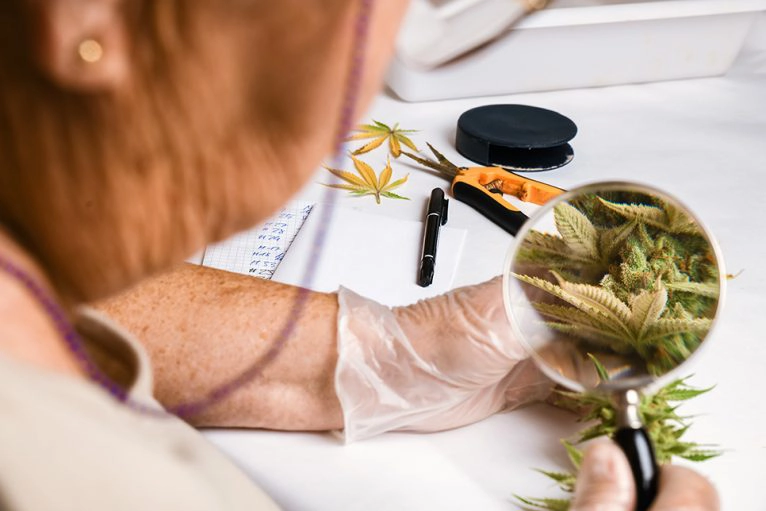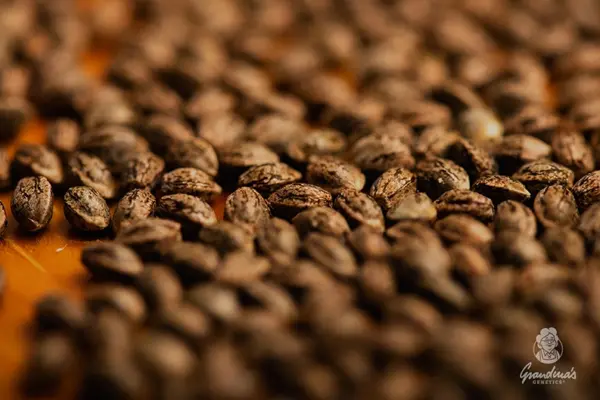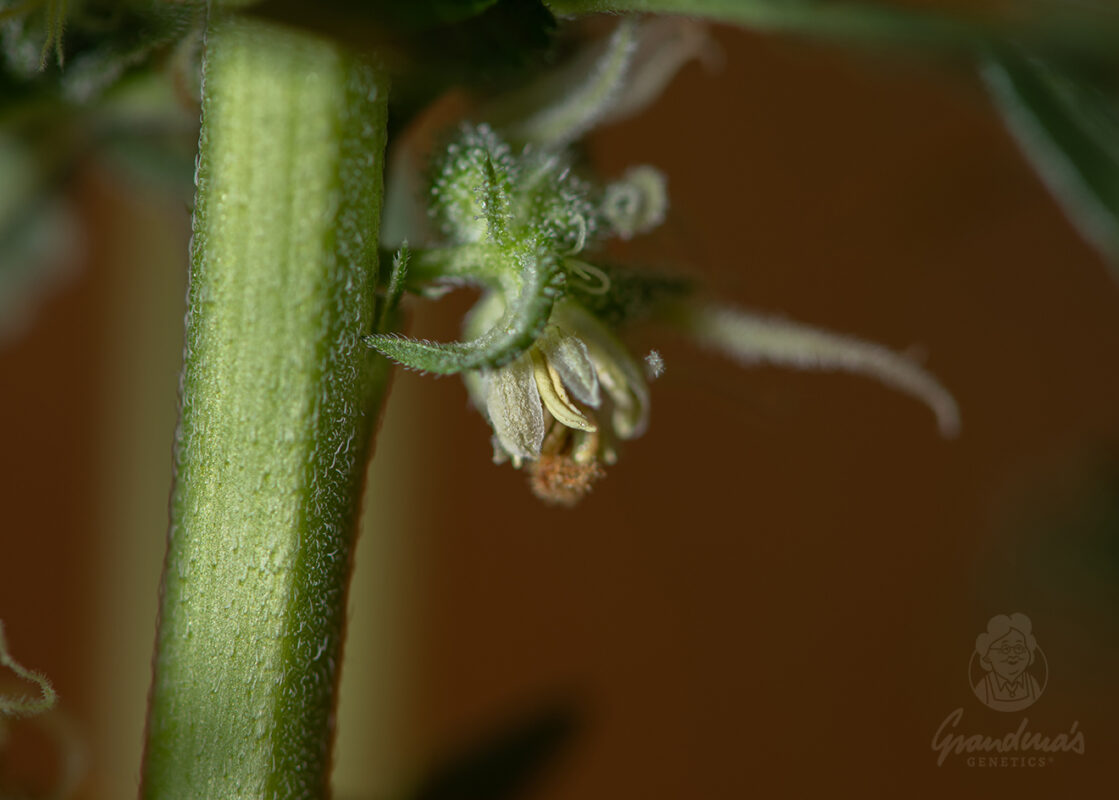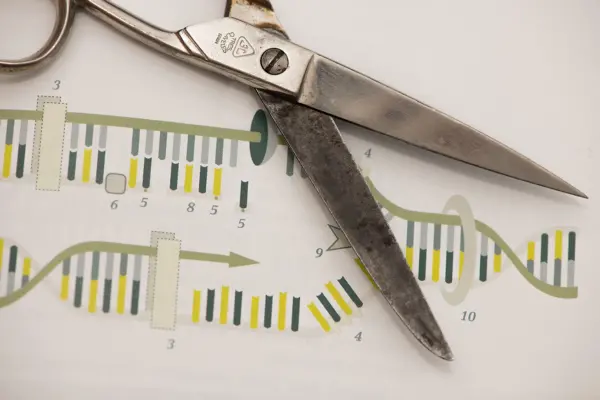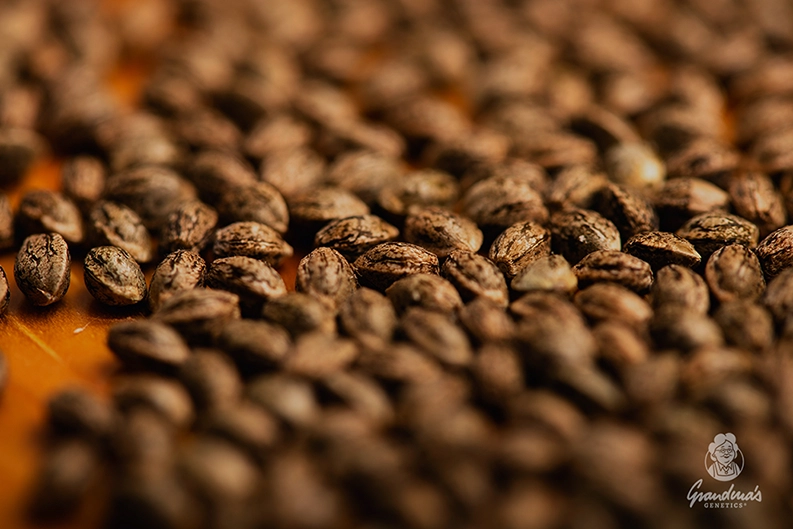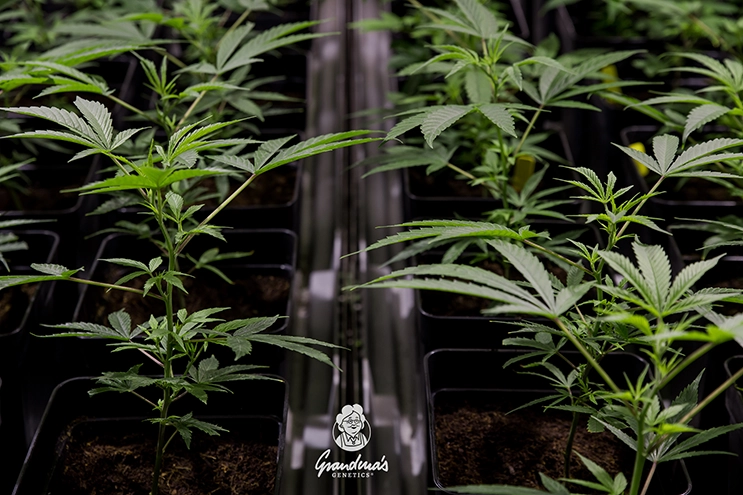What is “Hop latent Viroid” and where did it come from?
Hop Latent Virus (HLV, HLVd, HpLVd), as the name suggests, is a viroid. It is arranged as a single-stranded circular RNA consisting of 256 nucleotides.
This infection spread to hop propagation companies in the late 1970s [1]. It did not come to the attention of the scientific community until the 1980s, when this viroid was detected in hops worldwide [2]. Externally, there are no symptoms on the leaves of infected hop plants, but growth and yield are reduced, and the content of terpenes in hop trichomes changes [3,4].
Why is this interesting for us now?
Cannabis and hops both belong to the Cannabaceae family, and because of their close relationship, HLV can also infect cannabis and hemp plants.
But where hops have only a mild disease response, the disease is more devastating in cannabis. So how long have we been dealing with this? What are the symptoms? How to avoid it?
HLV Short Info:
- HLV does not need a host plant to survive – it only uses a plant’s metabolic system for replication.
- HLV can remain latent (def. latent = present but not [yet] appearing) in the host plant, making it difficult to detect.
- HLV does not kill the host plant.
But how did cannabis come to struggle with viroid now?
Good question. In recent years, we have seen an expansion of the cannabis industry in the US and Canada. Thus, more acreage of different plant crops were next to each other and there was a higher exchange of diseases [5]. So also hops and cannabis. In nature, the spread of viruses and also this viroid is mostly through insects that feed on both plants [6]. The transmission of HLV through pollen and subsequently seeds was demonstrated in 2023 by Atallah et al [7]. Infected female plants were pollinated with healthy pollen and 85% of the resulting seeds were also infected. They also tested it the other way round, a healthy female plant was pollinated with infected pollen. 55% of the resulting seeds were infected. In comparison, the figure for hops is around 8%. We also know that we can pass the viroid between plants, namely during vegetative propagation and the use of contaminated tools [8].
Since when is it a problem for cannabis?
The first description and discussion of the disease in cannabis was in 2014 and played out on internet forums. At the time, it was referred to as “duds” or “dudding disease” [9]. Graham Farrar of Glass House Farm in California noted symptoms on several cultivars in 2017. A search for the disease was conducted in collaboration with scientists from Phylos Bioscience. In 2019, the scientists were able to provide evidence that the “duds” were HLV-infected plants [10,11]. Impressively, according to a 2021 study, approximately 90% of all cannabis cultivation operations in California tested positive for HLV and 30% of the plants in each operation showed symptoms of infection with the viroid [12]. Since its initial discovery in California, it did not take long for HLV to make its way further north to British Columbia, Canada.
What does an infected cannabis plant look like and what happens to it?
As mentioned earlier, HLVd does not cause visible symptoms in infected cannabis plants, and under certain circumstances the viroid can remain latent for weeks or even months. As with hops, only some cannabis cultivars show HLV-associated symptoms, meaning that both the expression of symptoms and the severity of the disease depend on the genotype [12].
In susceptible cultivars, HLV leads to symptoms such as [10, 11, 12]:
- shorter internode spacing
- smaller leaves
- stunting
- malformation (externally horizontal plant structure)
- chlorosis
- brittle stems
- reduced vigor
- reduced water uptake
- reduced flower mass and trichomes
In addition, cuttings from symptomatic plants taken for cuttings propagation showed a lower rooting rate [10].
In the flowering stage, the other symptoms are evident [5, 12]:
- smaller inflorescences
- looser inflorescences
- deformation of inflorescences
- lower production of trichomes
These effects lead to a loss of quality and yield. Due to the lower number of trichomes, cannabinoid and terpene production can be reduced by up to 50%.
Can I still save my infected plant?
Short answer. No, but if you really want it bad enough, you can use in vitro techniques to do it. In a 2008 study with hops, HLV concentrations were found to be lower in warmer months and climates, with higher concentrations in the roots and lower parts of the plant [13]. In other words, this means that at peak warm temperatures there is a lower, to no, HLV load. Dark Heart Nursery has taken advantage of this and describes their approach in a podcast recorded in 2019. In their treatment protocol, the plant is exposed to warm temperatures and a meristem tissue culture is grown. Once the culture is old enough to be tested, we find out if the purification really worked [14]. But this method takes a lot of time and effort.
What can I do now to make my garden clean?
Do not accept cuttings where you do not know 100% that they are clean. If you are not sure, you should isolate your newly acquired cutting from your other plants. If symptoms appear while you are growing, this is critical. If you have been using the same tool on your other plants without sterilizing it in between or defoliating with your hands without washing them between each plant, the possibility is very high that all your plants are at risk [5]. The next step would be to test them. If the test is positive, you have no choice but to destroy all the plants and start the grow all over again. Sorry.
The good side:
There are still growers and breeders who take care of their genetics and work cleanly. You should stick to them. When you buy a cutting, make sure it is clean. You can ask for a test of the mother plant.
Currently, the best choice to not get HLV is to work clean, have good protection from insects and use seeds from respected and transparent breeders.
This article was written by our guest author Science Herbalist. The information written here is based on the current state of science (26.02.2024). If there are any new findings, we will try to update this blog article or write another one.
Sources:
- BARBARA, D. J., MORTON, A., & ADAMS, A. N. (1990): Assessment of UK hops for the occurrence of hop latent and hop stunt viroids. Annals of Applied Biology, 116(2), 265–272.
- PUCHTA, H., RAMM, K., & SÄNGER, H. L. (1988): The molecular structure of hop latent viroid (HLV), a new viroid occurring worldwide in hops. Nucleic Acids Research, 16(10), 4197–4216.
- BARBARA, D. J., MORTON, A., ADAMS, A. N., & P.GREEN, C. (1990): Some effects of hop latent viroid on two cultivars of hop (Humulus lupulus) in the UK. Annals of Applied Biology, 117(2), 359–366.
- PATZAK, J., HWNYCHOVA, A., KROFTA, K., SVOBODA, P., MAlirova, I. (2021): The Influence of Hop Latent Viroid (HLVd) Infection on Gene Expression and Secondary Metabolite Contents in Hop (Humulus lupulus L.) Glandular Trichomes. Plants. 2021; 10(11):2297
- PUNJA, Z. K. (2021): Emerging diseases of Cannabis sativa and sustainable management. Pest Management Science, 77(9), 3857–3870.
- CROWLE, D. R., PETHYBRIDGE, S. J., & WILSON, C. R. (2006): Transmission of Hop Latent and Hop Mosaic Carlaviruses by Macrosiphum euphorbiae and Myzus persicae. Journal of Phytopathology, 154(11-12), 745–747.
- PETHYBRIDGE, S.J.; HAY, F.S.; BARBARA, D.J.; EASTWELL, K.C.; WILSON, C.R. (2008): Viruses and viroids Infecting hop: Significance, epidemiology, and management. Plant Dis., 92, 324–338.
- LAVAGI, I.; MATOUSEK, J.; VIDALAKI, G. (2017): Other Cocadviroids. In Viroids and Satellites; Elsevier: Amsterdam, The Netherlands, pp. 275–287
- https://www.thcfarmer.com/threads/what-to-do-with-duds.64342/
- WARREN, J.G.; MERCADO, J.; GRACE, D. (2019): Occurrence of hop latent viroid causing disease in Cannabis sativa in California. Plant Dis., 103, 2699.
- BEKTAS, A., HARDWICK, K. M., WATERMAN, K., & KRISTOF, J. (2019): The Occurrence of Hop Latent Viroid in Cannabis sativa with symptoms of Cannabis Stunting Disease in California. Plant Disease.
- ADKAR-PURUSHOTHAMA, C.R., SANO, T., PERREAUL, J-P. (2023): Hop Latent Viroid: A Hidden Threat to the Cannabis Industry. Viruses.; 15(3):681
- PETHYBRIDGE, S.J, FHAY, S., Dez J. Barbara, Kenneth C. Eastwell, Calum R. Wilson. (n.d.). (2008): Viruses and Viroids Infecting Hop: Significance, Epidemiology, and
- Dark Heart Nursery (2019): Dark Heart Nursery Identifies “Dudding” Pathogen – Hop Latent Viroid [Video].





